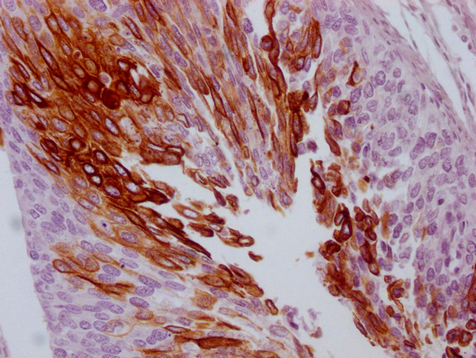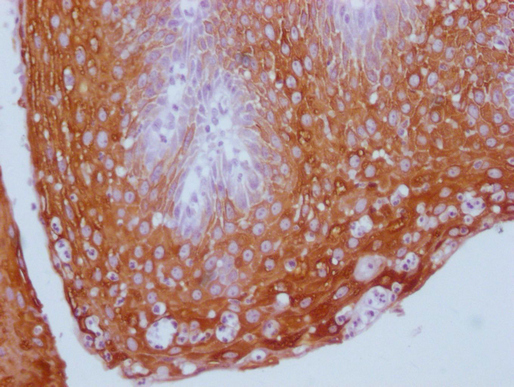The KRT13 monoclonal antibody is produced using the hybridoma technology that involves multiple steps. It starts with the immunization of mice with the synthesized peptide derived from human KRT13. B cells are isolated from the spleen of the immunized mice and fused with myeloma cells to create hybridomas. These hybridomas are then screened to select the ones that produce antibodies specific to KRT13. Once selected, the hybridomas are cultured in the mouse abdominal cavity and the KRT13 monoclonal antibodies are purified from mouse ascites by affinity chromatography using a specific immunogen. The purified KRT13 monoclonal antibody is highly specific, reacting exclusively with human KRT13 protein in ELISA and IHC applications.
KRT13 is specifically expressed in stratified squamous epithelia, including the oral mucosa, esophagus, and female genital tract. KRT13 is involved in the formation of filaments that provide mechanical stability to epithelial cells, help to maintain the structural integrity of tissues and provide a barrier against physical and chemical stress. It also plays a role in cell signaling and the regulation of gene expression.







